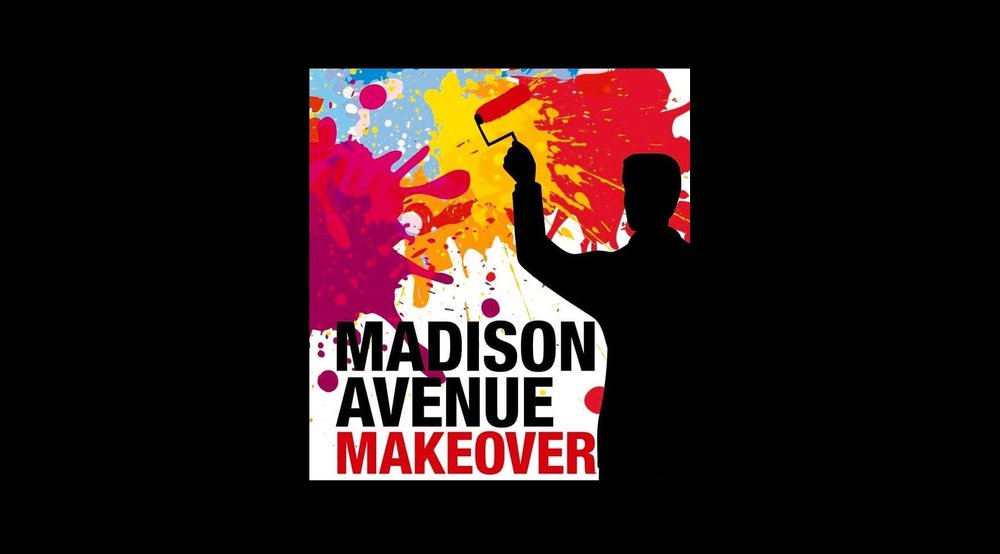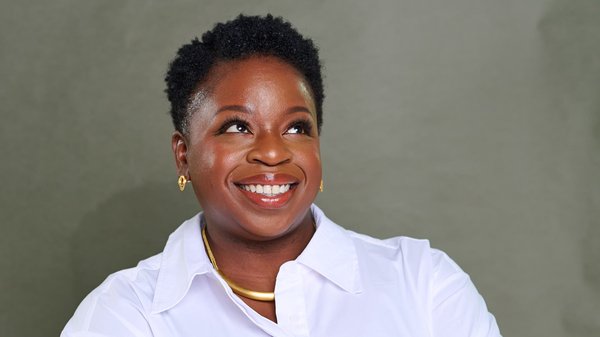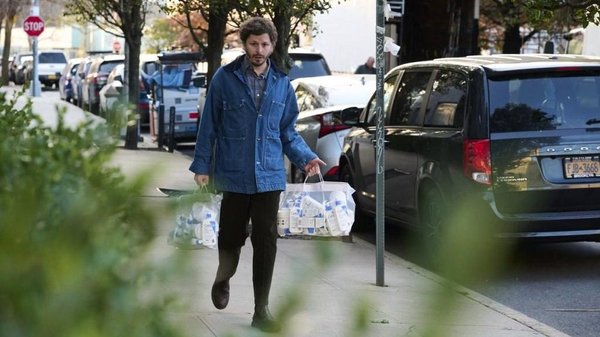‘The rest of the ad industry is playing a loser’s game’ /
Author and consultant Michael Farmer talks about ad agency decline, why selling creativity is a cop out, and why introducing AI to advertising is like pouring gasoline on a fire
James Swift
/
Photo by Hiroshige Fukuhara on Unsplash
Ad agency consultant Michael Farmer made his name with a book, Madison Avenue Manslaughter, that explained in forensic detail how advertising agencies are being run into the ground.
Now, he’s published a second book: an inside account of one creative agency’s attempt to save itself from decline with a new business model.
Madison Avenue Makeover tells of Huge CEO Mat Baxter’s efforts to transform his agency from a service-oriented creative shop into a company that sells fixed-price products that help clients grow.
Over a Zoom call, Farmer spoke to Contagious from his Connecticut home (in a town called, coincidentally, Madison) about the problems that beset agencies, why he believes that focusing on creativity is a cop out, and why introducing AI into advertising is like pouring gasoline on a fire.

Your new book is a case study of a creative agency turnaround, told from your perspective as a fly-on-the-wall observer, invited in by the CEO leading the transformation. Why did you decide to take this project?
I’ve been consulting to the industry for 30 years and despite all the problems in the industry, I had never run into a CEO, who said, ‘Oh, my God, this is terrible, we have to do something about it.’
Ironically, I didn’t even know Mat [Baxter, CEO of Huge] that well. We had only exchanged emails over a short period of time. And he wasn’t even experienced at running a creative agency. But I had a lot of regard for him because I knew he had turned around Initiative, the big media agency in New York. So when he said, ‘I'm taking over Huge, and I’m going to do a transformation. I’m not quite sure what I'm going to do yet, but how would you like to document the whole process?’ I thought, how could I ever say no? I probably would have paid to do that project, you know?
In the agency world, no one ever talks about management processes. They sort of pride themselves in the fact that [agencies] run themselves.
In my first book [Madison Avenue Manslaughter], which I was writing when I had Saatchi & Saatchi as a client, Kevin Roberts, the [Worldwide] CEO of Saatchi, told me that I didn't really understand the agency business, even though I’d been doing it 20 years. He said, ‘You don't understand that a creative operation like ours is just like an anthill, where every ant knows his job and has the freedom to do it. And my job as CEO is to make sure they have that freedom.’
And I thought, ‘Well, that's a different view of management because most of the executives that I have seen tried to get their organisations to do something that was not entirely natural, to perform better than each of them would have performed on their own.’
So, you know, here was a guy, Mat Baxter, a young Australian, having a career in media, taking on a stagnant but good agency, and saying, ‘I’m gonna turn it on its head. How would you like to write about it? I thought, ‘Oh, my God, this is God given. I have to say, yes.’
Why do you think Mat Baxter wanted someone to write about the transformation?
To be perfectly honest, I still don’t know. I had a view in the beginning that he was going to do something important, and he would have loved to have had the industry’s critic document it and ratify it. However, in the course of doing the book, I shared various drafts with Mat, in particular, anything having to do with his career, and what people had to say about him. And the interesting thing is that he said to me quite early on, ‘You know, I don’t think you really understand me. I think you’re being much too kind and generous about who I am as an individual. I’m a mixture of good and bad, good and bad management practices. And I think you need to talk to some people from my past to get a better sense of that.’ He really did not want a puff piece. I think he wanted to show the grittiness of what it takes to turn a culture around.
Was Mat happy with the book?
I don’t know whether happy would be the word. I think he feels the book accurately documents the process they went through. Whether the book is exactly what he had in mind, I suspect not, because I have very different experiences from Mat. I might have seen something quite different about what was going on at Huge than what he was experiencing.
Michael Farmer
There were several publishers that turned the book down because they said ‘write this book in five years’ [when the results of the transformation are known]. But I thought, ‘No, it needs to be written today, even though it has an ambiguous ending.’
But I tried to give Mat full credit for what he did accomplish, which was to change the paradigm of an ad agency. Most agencies have bought into the fact that they’re delivering creativity, and it’s supposed to be self-evident what that delivers. I argued in my first book and I argue in this book that that doesn’t make any sense. The evidence that pure creativity works is meagre.
Clients are not growing, clients fire agencies every three years, clients pay agencies very little and those fees are in decline, and agencies don’t pay their people very well. That isn’t a very strong argument for what agencies are doing is successful.
And Mat had the guts to say, ‘I’m not going down that route. I’m not going to play a loser's game.’
The truth of the matter is the rest of the industry is playing a loser’s game. They’re just replacing old clients with new ones, and they’re doing it generally at prices that are inferior to what they were being paid in the past.
Michael Farmer
Is your scepticism towards creativity about whether creativity itself can help a business grow, or just towards the way that agencies package and sell that creativity?
All right, I’m gonna be very heretical here – I don’t know what creativity is. I’m a management consultant who will not make a judgement unless I have numbers. However, the stories that I put together from facts require a great deal of creativity. My first book demonstrated that agency workloads are growing and agency fees are declining, and therefore the price of agency outputs has been in decline for 30 years. That is a creative, big idea. No one else has ever said that. No one else ever pulled together the data that allowed anyone to measure workloads. And I think most of the people that I’ve worked with are also very creative. But we never say we’re creative. We never say we’re analytical. What we say is, ‘We help clients accomplish something,’ and that we deploy creativity and analysis against that.
If you say creativity helps brands grow, why is there no dialogue between clients and agencies about why [clients] are not growing today? A typical client would say, ‘We want you to do this scope and we’re prepared to pay $2.5m. And the scope of work covers every media possible. Does anyone ever say why those deliverables have been selected? No, they don’t even discuss it. They say, ‘Here's the scope of work, here’s the fee, get on with it.’ And the agency says, ‘Well, that fee actually doesn’t cover enough people to do the work.’ But they’ve never negotiated the work. They’ve never negotiated either the quantity or the content of the work.
Tell me logically how doing work in that form solves problems that clients can’t solve for themselves? It can’t. The big consulting firms spend several months at the beginning of a relationship trying to figure out why things used to be better in the past than they are today. When I was at [consultancy] BCG, we used to require five years of data for every product – you had to understand the past. Agencies don’t do that. So they come up with cute ideas for ads that communicate in cute and entertaining ways, and that gets called creativity.
One of the most creatively awarded companies in the world is Burger King – the worst performer in fast food among its major competitors. Their sales per restaurant are $1.4m. McDonald’s are $3.4m and Chick-fil-A’s are $6.1m. Why in the world would you ever run a print ad or a video of a mouldy burger if you want people to come in and eat more of your burgers?
Was it not the case for Burger King that the creative advertising just failed to make up for the rest of the problems in the business?
I think the advertising was completely in line with the other problems. I think a mouldy burger is consistent with a chain where cleanliness isn’t top of mind and the food isn’t that great. But they struggle so hard to be creative and to win awards.
[Burger King] is just an example of creativity run amok and then highly awarded by the industry for creative solutions that didn’t solve business issues. I think creativity really is divorced from business practices generally across the industry.
The focus on creativity is a bit of a cop out. It’s easier to be creative than it is to deliver growth. But if you do it [deliver growth], you get paid highly for it. The consulting firms get paid five times the cost of their people, agencies get paid two times the cost of their cheaper people. There’s a huge difference.
What is the ‘results paradigm’ that you talk about in your new book?
The idea came to me from a book that I read some time ago, called The Structure of Scientific Revolutions. The author [Thomas S Kuhn] wanted to explain how the millions of scientists out there doing research are able to pivot when there are new discoveries in science. How do Newtonian scientists shift to become Einsteinian scientists, so to speak? And what Kuhn said was that all scientists do research under the umbrella of existing theories of science in their specialised fields. And they continue to experiment, and every once in a while, they generate results that are inconsistent with the theory. But when that happens, they don’t throw the theory out, they just keep trying to refine it.
Now, when the anomalies get to be so big that no one knows what to do, then you have a crisis and a scientific discipline is ripe for someone from the outside to come in and articulate a new theory.
So I said, ‘What does that have to do with advertising?’ Well agencies have been operating under this paradigm where all that matters is, ‘we’re creative’, and that’s expected to work, but right now the data are anomalous.
Mat said the reason why is that we are not working to solve client performance problems. If we were, we would focus our activities differently. We would mobilise our creativity differently. We would marry it with technology and other capabilities in a focused way to help clients perform. And we’d spend a lot of time evaluating whether we were doing that.
That is a paradigm change.
That’s going from, ‘We're all about creativity’, to ‘We’re all about fixing client performance problems’. And that’s a new theory of what an advertising agency is.
Kuhn says the people that define the new paradigms are almost always quite young and outsiders. And look at Mat, he was 44, he had spent a career in media, and he was an Australian working in New York. I think he met the criteria for an outsider.
Michael Farmer
Within that paradigm, do agencies become virtually indistinguishable from management consultancies?
No. They’re good at image, sound, customer analyses, and they package communications in what can be a very effective way.
Listen, I think agencies are good. They have incredibly sophisticated capabilities; they’ve just never focused them in the right way.
That’s where I fault the CEOs of ad agencies who only worry about making the numbers for the holding company, rather than asking fundamental questions, like, ‘Why are we paid so little? Why do we get fired every three years? Is it really procurement’s fault?’
When I worked at [management consultancy] Bain & Company, Bill Bain always said, ‘If there’s a problem, assume that you are 100% the reason. If there’s a problem in a relationship, assume that it’s our problem, not theirs.’
I think agencies are the authors of their own relationship problems, and I fault the leadership for just taking the easy way out.
In the book, Mat Baxter hires a consultancy, The Business Model Company, to help with the turnaround. Its assessment is that Huge must become a company that sells products rather than services. Do you think that was the right call, and is it broadly applicable to creative agencies?
I think it was correct for Huge as a digital creative agency wanting to help clients in one of three ways (experience transformation, technology realisation and growth).
Now, if they were to take on Ogilvy or TBWA or BBDO, I think it would be much harder to productise the current types of scopes of work that exist, which are in many different media.
I did a recent analysis of a major agency based in Latin America with 50 creatives, and they cranked out 15,000 deliverables. There’s a big difference between 15,000 deliverables that each have a price and the 45 products at Huge, which is probably too many anyway.
So I think that The Business Model Company struggles a little bit with defining how you productise a creative agency. I think it is possible, it just has to be done in a somewhat different way.
As far as you’re aware, is what Huge has done to its business model unique among agencies?
Yes, I believe so.
Are there any agencies that you’re aware of that are trying to tackle the same problems in different ways to Huge?
None whatsoever.
Are there any other pricing models or structures beyond productisation that you think are ready to be tried?
Ever since I started [consulting to agencies] with Ogilvy UK in 1992, I have said that as a consultant, I need at least three kinds of data to understand what’s going on. I need to understand how much stuff the ad factory makes. I believe ad agencies are factories that make ads. That is not to denigrate them. Advertising agencies are factories that make an enormous number of creative deliverables – and media, too, for the media agencies – that are meant to do something important for the clients. So, I have to know how much stuff they make. I have to know how much they’re paid, and I have to know what resources they have to do that. And for 30 years, I’ve only been able to find out what they get paid, and how many people they have on the account. And from that agencies determine whether the account is profitable.

Photo by Carl Heyerdahl on Unsplash
Imagine that you’re being paid $10m by a client, and imagine that all of your costs for people and overheads are $8.5m. You’re left with $1.5m. You make a 15% margin. That’s the way agencies think about the business. I ask the somewhat naive question, ‘How much work are you doing for the $8.5m?’ Well, I have to go in and spend seven weeks reconstructing it, and then I have a way of normalising all the different types of briefs in a scope of work. I give them a value called a Scope Metric Unit [SMU] value. A typical TV ad has a value of one. And a Facebook post has a value of 0.004956 or something. Then you add it all up.
They should go and say, ‘We’ve looked at the scope of work that you want us to do, and we’ve discovered there is 50 SMUs of workload, and we’re going to charge $175,000, per SMU. That’s productisation. The product is the total scope of work for every client. And what I do in my consulting practice is I figure out how big the scope of work is for every client, and then I divide the fee by the amount of work and I get the price.
But in a typical agency that I might go into, the price that they charge 10 different clients could vary from $300,000 per scope metric unit, to $30,000. Why? Because they get a certain fee, and they’re doing an unknown quantity of work. Agencies don’t have a pricing strategy for their work, and on 60% of their clients, they’re paid below what they need to be paid to have the right number of people on the work.
On the other hand, that understaffing is the way they make their margins. And what a brilliant way to make the holding company happier: ‘Hey, we’re gonna make our numbers this year, we’re only stretching our people by an extra 40%, pissing them off, forcing them to hate the agency and to want to move to another agency in the hope they can make more money.’
Michael Farmer
Publicis as a French company has to publish its turnover, and they brag about the fact that their employee turnover is only 29% on average [Publicis’ employee turnover in 2022 is recorded as 27.9%]. Only 29%! Whereas the rest of the industry is between 40% and 50%. How do you run a company that has a 29% turnover? I’ll tell you how you do that – you stretch the hell out of them and underpay them.
So the way agencies make their money and keep the holding company happy is that they abuse their talent and force them out. And then when they finally downsize to make their numbers at year-end, they’re liquidating their talent. How can you not be critical of a company that liquidates its talent in order to make numbers so that the share price stays up so that the senior executives can make tens of millions of dollars? It’s wrong and it’s slightly immoral, I think, from a business standpoint.
Has your assessment of the ad industry changed since you wrote Madison Avenue Manslaughter in 2015, or since you last revised the book in 2019? Has anything happened since then that altered the agency landscape?
Yes, AI has come into being, which is like pouring gasoline on [the trends discussed in] Madison Avenue Manslaughter. Let’s not forget, the business model of the holding companies, to a very considerable extent, is to get paid for bodies. And I have seen enough AI to know that a lot of those bodies are going to be replaced by AI. That’s particularly true for media planning, which accounts for 30% or so of media agencies’ headcount. And then if we think about creative agency scopes of work, even if you assume that the digital and social scopes of work represent 40% of the total workload of an agency these days, how much of that is vulnerable to AI? I’d say half of it. So maybe 20% of a typical creative agency workload could be replaced by AI. Well, that’s 20% of the people, not counting overhead people. And there isn’t a holding company that can survive that big a change. Madison Avenue Manslaughter said, ‘You’ve got to charge for the work, not the people,’ and I think that this is going to accelerate the need for people to convert from labour-based fees, to product-based fees. In other words, the direction that Mat [Baxter, CEO of Huge] went.
You’ve previously talked about the squeeze that holding companies put on their agencies having consequences down the line, as well as the possibility of holding companies disappearing all together. Does the advent of AI change any of that?
I think that AI is gasoline on that fire, too, because clients can also use AI. If WPP gets involved in AI, and Omnicon gets involved in AI and IPG gets involved in AI, that doesn’t mean they’re going to dominate the technology. I think their clients are going to use it for the stuff that AI is good for doing, and agency fees are going to get cut.
Now, what did I mean about holding companies going away? It all comes down to whether the holding company adds value, other than consolidating a bunch of income statements for potential investors. Although Wall Street believes that holding companies have a reason for existing, I think that reason is that they deliver numbers and share price. As long as they perform, Wall Street will assume holding companies have a purpose. But as soon as they are not growing, they will say, ‘What the hell is a holding company anyway?’
There was a whole conglomerate movement back in the 1960s in the 1970s – Textron, Litton, LTV – and they all got broken up. They all convinced Wall Street that they had a reason for being because what they mainly did was they bought companies. But those conglomerates all went away, and I think the holding companies could, too, unless they have a reason for being.
Private equity firms: they too buy companies with debt. But what do they do? They fix those companies for resale. Holding companies do not try to fix their agencies. They squeeze them. [They should] start behaving more like private equity firms and say, ‘We can figure out what [agencies] need to do; we will help them migrate from service orientation to productisation’. But they won’t do it. You know why? It’ll be too upsetting to Wall Street because the earnings growth and all that stuff will kind of disappear while they sort themselves out.
I know I sound terribly pessimistic, but I’m just driven by the facts that these other folks don't look at.
What’s the one message that you hope that any agencies who read your book will take from it?
I think they should say, Mat Baxter has it right, and the major consulting firms have it right – we need to be in business to help our clients perform better.
How and when will you know if Huge’s transformation has been a success?
I’ll be sure to pick up the phone from time to time and say, ‘Hey, how’s it going?’ And, who knows, there might be a second edition of the book at some point.
Want more of the same? /
We don’t just write about best-in-class campaigns, interviews and trends. Our Members also receive access to briefings, online training, webinars, live events and much more.







